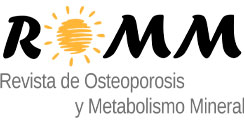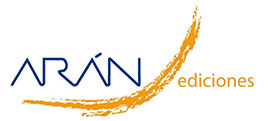Trabajo Original
Osteoporosis precoz en relación con variantes del gen WNT1
Álex García Tellado, Ana I. Vega Pajares, Álvaro del Real, Gonzalo Martínez de las Cuevas, Nuria Puente, Marta Martín Millán, José Luis Hernández Hernández, José Manuel Olmos Martínez, José Antonio Riancho Moral
 Número de descargas:
4619
Número de descargas:
4619
 Número de visitas:
171
Número de visitas:
171
 Citas:
0
Citas:
0
Compártelo:
Introducción: La osteoporosis de inicio precoz es una entidad poco reconocida que afecta a varones jóvenes y mujeres premenopáusicas. En algunos casos, puede tener un origen monogénico, con variantes en genes implicados en la homeostasis ósea. WNT1 codifica un ligando de la vía de señalización Wnt, que es fundamental para la diferenciación osteoblástica. Este estudio describe una serie de pacientes con osteoporosis precoz asociada a variantes en heterocigosis del gen WNT1. Pacientes y métodos: Se revisaron los pacientes con osteoporosis de inicio precoz sin causa secundaria identificable remitidos a nuestra Unidad de Metabolismo Óseo. Se realizaron estudios bioquímicos, densitométricos y secuenciación de nueva generación de un panel de genes relacionados con el metabolismo óseo. Las variantes se analizaron mediante herramientas bioinformáticas y se evaluó su posible impacto clínico. Resultados: Se identificaron 6 pacientes (2 varones y 4 mujeres) con variantes en el gen WNT1. La media de la edad al diagnóstico fue de 36 años. Cuatro presentaron osteoporosis con fracturas vertebrales y periféricas, mientras que uno tuvo múltiples fracturas periféricas. Una paciente presentaba también hipermovilidad y se identificó en heterocigosis una variante en el gen FLNA. Otra debutó con fracturas vertebrales durante la lactancia. Todos recibieron tratamiento para la osteoporosis, con respuesta variable. Conclusiones: Las variantes en heterocigosis en el gen WNT1 pueden asociarse a osteoporosis de inicio precoz y elevado riesgo de fracturas. La secuenciación genética permite mejorar el diagnóstico etiológico, aunque se precisan estudios adicionales para optimizar el manejo terapéutico, incluyendo el potencial beneficio de fármacos moduladores de la actividad de la vía Wnt.
Palabras Clave: Alteraciones monogénicas óseas. WNT1. Osteoporosis de inicio temprano.
DOI: 10.1007/s00223-021-00885-6
DOI: 10.1210/endrev/bnab017
DOI: 10.1210/jc.2017-00099
DOI: 10.1038/gim.2015.30
DOI: 10.1016/j.devcel.2005.02.017
DOI: 10.4049/jimmunol.1102836
DOI: 10.1002/ajmg.a.61119
DOI: 10.1126/scitranslmed.aau7137
DOI: 10.1002/jbmr.3959
DOI: 10.1007/s00198-022-06609-2
DOI: 10.1210/jc.2014-1584
DOI: 10.7150/ijms.90189
DOI: 10.1126/science.abo1131
DOI: 10.1038/s41436-020-01007-7
DOI: 10.3389/fendo.2019.00070
DOI: 10.1016/j.ajhg.2013.02.010
DOI: 10.1210/clinem/dgac752
DOI: 10.1016/j.bone.2014.06.041
DOI: 10.1016/j.bone.2017.04.001
DOI: 10.1002/jbmr.2841
DOI: 10.1016/j.bonr.2022.101176
DOI: 10.1002/ajmg.a.63987
DOI: 10.1056/NEJMoa1215458
DOI: 10.1016/j.bone.2018.06.018
DOI: 10.1016/j.ajhg.2013.02.009
DOI: 10.1038/s10038-019-0565-9
DOI: 10.1186/s12881-018-0639-0
DOI: 10.1136/jmedgenet-2013-101750
DOI: 10.1016/j.bone.2018.02.029
Artículos Relacionados:
Trabajo Original: La variante missense rs2908004 de WNT16 actúa como eQTL de FAM3C en osteoblastos primarios humanos
Artículos más populares
Revisión: Acción de la cerveza sobre el hueso
Aunque se ha demostrado que el exceso de alcohol e...
Trabajo Original: Resumen ejecutivo de las guías de práctica clínica en la osteoporosis postmenopáusica, glucocorticoidea y del varón (actualización 2022). SEIOMM
Esta versión actualizada de la Guía de osteoporosi...
-
Licencia creative commons: Open Access bajo la licencia Creative Commons 4.0 CC BY-NC-SA
https://creativecommons.org/licenses/by-nc-sa/4.0/legalcode

 Español
Español English
English


